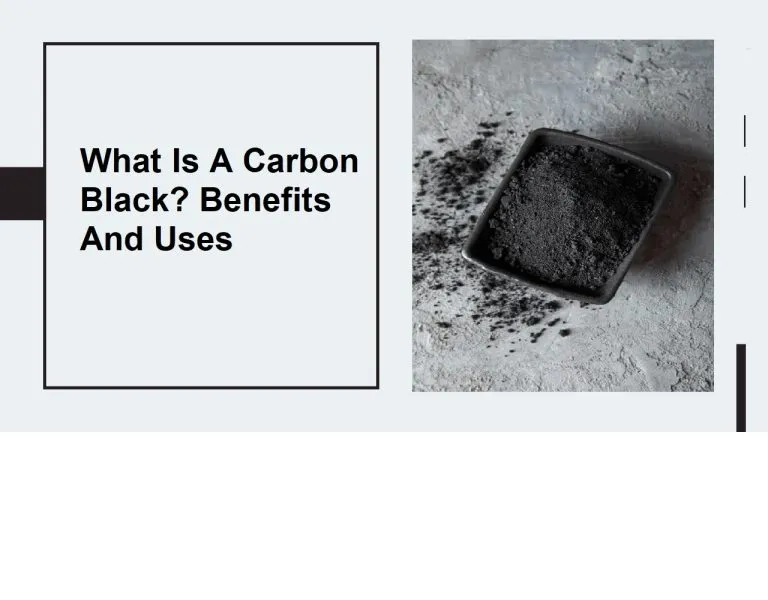What is Carbon Black?
Carbon black chemical is a solid that is black which is commonly applied for ingredients in many products that we use on a daily basis. It’s used to make coating, paint pigments, ink, and tires. Others include rubber goods, plastic, UV protection, and conductive material pigments. this chemical is also a very efficient material for absorbing light and heat energy.
Carbon Black has been applied since ancient times. As time went by, carbon black production, process, and quality have been improved. From starting mass production during the 19th century to conveying furnace process in the early 20th century to reach more efficient methods and a wider selection of particle size. Until this day, the furnace process is still applied, but with more advanced technology and methods.
The demand for carbon black is increasing as it is a versatile material that can improve the properties of many different materials and is used in a wide range of applications.
What Are Carbon Black Properties?
Carbon black It has the following properties:
- Conductive carbon black conducts heat and electricity well, so it can be used in electrical insulation
- Electrical insulator carbon black also acts as an electrical insulator, which means it doesn’t allow current to flow through it. This makes it useful for heat insulation as well as electrical insulation purposes because it prevents heat from escaping or entering an object through its surface area (which would happen if there were no carbon black).
- Thermal conductor the ability of a material to conduct thermal energy means that the material allows heat transfer between two points within itself when those two points are at different temperatures; for example, if your hands were warmer than their surroundings, then perhaps there’s still some leftover moisture left behind after washing dishes last night so maybe try drying off first before starting work again tomorrow morning!
Some of the carbon black grades that can be found on the market are N660, N990, N772, N326, N375, N550, etc. These carbon black grades are determined by the manufacturing process and the intended application as these depend on the desired properties of the final product, such as durability, strength, and color.
N660, N990, and N772 are highly structured, medium oil furnace black used in tires and rubber goods.
While N326, N375A fine structure, and low oil furnace black are used in coatings, printing inks, and plastics.
The N550 is a medium-structured, medium-oil furnace black used in tires and rubber goods.
Therefore, a user has to discuss or consult with a carbon black supplier, carbon black distributor, or carbon black wholesaler about which carbon black they would like to use for their production.
What Industry Uses Carbon Black?
Carbon black uses can be found in industries such as rubber goods, plastic, UV protection, and conductive material pigments including paints, inks, coatings, and tires.
Tires: This is the most common use in the manufacture of tires. Carbon black structure provides possibilities such as a reinforcing agent in tires, providing strength and durability to the rubber. It also improves the abrasion resistance of tires and helps to protect them from UV radiation.
Rubber goods: It is used in the manufacture of other rubber goods such as hoses, belts, and seals.
Pigment: It is also used as a pigment in many industrial and consumer goods, including inks, paints, and plastics, providing a wide range of colors to choose from.
Conductive material: Carbon black is used as an electrically conductive agent in batteries, electronic devices, and other applications where a high level of conductivity is needed.
UV protection: Carbon black is used in UV-absorbing applications such as sunscreen, to protect plastics and other materials from UV rays.
As previously stated, Carbon black supplier would need to discuss the user’s application of carbon black alongside the suitable grade for the application.
What Is The Future Of Carbon Black?
The future use of carbon black will be more extensive. It is a material that has been used for many years, and it’s not going anywhere anytime soon. It can be found in many products on the market today, including tires and rubber boots. In fact, carbon black is so useful that its future use will only expand as more industries discover how much they can benefit from using this substance.
It’s also a very versatile material, which is another reason why it will continue to be used for many years. Carbon black chemicals can be found in products that are used in manufacturing and even some cosmetics like lipstick.
Why is Carbon Black Important
As civilization grows, carbon black is important. It provides aesthetics or appearance, and functionality for certain products. Had carbon black not been applied to products, aesthetically or functionally would not be optimal as carbon black applied on products.
Benefits Of Carbon Black
Following carbon black uses as previously stated, carbon black would give aesthetics to the user’s desire for appearance (in paints, etc.). For practical purposes, It is used as an electrically conductive agent, especially for those which require high inductivity, including in batteries, and electronic devices. Others are Ultraviolet protection, for tires, plastics, sunscreen, etc. It also contributes to strength and durability as well as abrasion resistance for tires, thanks to the carbon black structure.
Final Thoughts
Carbon black can be applied for various industries including rubber goods, plastic, UV protection, and conductive material pigments including paints, inks, coatings, and tires. It contributes to the aesthetics and functionality of the end product. Yet, grades is differing. Depending on the intended application these depend on the desired properties. Therefore, users of this material have to consider what the application is for, as well as the grade that is desired for the production of the end product.

Leave a Comment